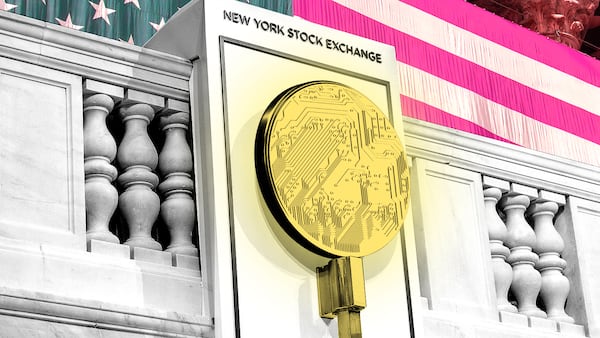- Crypto markets crashed on Friday after Trump announced new China tariffs.
- That crash was fuelled by a leverage boom that culminated in billions in long positions getting liquidated.
- Signs of market stress included Ethena's USDe losing its peg to the dollar and Tether trading above peg.
Fresh tariffs on Chinese goods entering the US jolted markets that had seen a massive run-up in leveraged crypto trading, causing Friday’s record-setting flash crash.
Prices of major cryptocurrencies nosedived immediately after US President Donald Trump announced 100% tariffs on Chinese goods Friday.
As crypto markets dipped, leveraged traders were forced to close out their positions, causing a cascade of liquidations that eventually topped $19 billion.
“As someone who thought the inevitability of this sort of wipe had been building for months, it was still shocking to see the severity and speed of it,” pseudonymous crypto influencer Evanss6 wrote on X.
Within a half hour of Trump’s announcement, Bitcoin fell about 10%, briefly dropping below $105,000. Ether fell more than 12%, to $3,500. Solana, Hyperliquid, and Sui fell 17%, 45%, and 70%, respectively.
The crash comes amid a boom in leveraged crypto trading that propelled two-year-old decentralised exchange protocol Hyperliquid to third place among crypto’s highest-earning companies and protocols, behind stablecoin giants Tether and Circle, according to DefiLlama data.
Open interest on major cryptocurrencies — a rough proxy for leveraged trading — skyrocketed this year.
At the start of the year, there was about $23 billion in open interest on Ether. On the eve of Friday’s crash, that figure was just under $60 billion, according to data from Coinglass.
Data for other cryptocurrencies tell a similar story. Open interest on Bitcoin and Solana grew 374% and 205%, respectively, between January 1 and October 9.
According to research from crypto company Glassnode, a concomitant rise in price and open interest signals increasing long bets on an asset. Indeed, open interest in cryptocurrencies has largely increased in line with their prices over the course of 2025.
That all came crashing down on Friday. And it appears to have started with China’s Thursday announcement it would further restrict export of rare earth elements used in the manufacture of computer chips and other technology.
In response, Trump said he would impose an additional 100% tariff on Chinese goods as well as export controls on “critical software” on November 1.
Major stock market indices fell more than 2%, showing crypto remains especially volatile even as the asset class matures and becomes ever more embedded in world finance.
Crypto prices fell so quickly that many exchanges took the dramatic step of auto-deleveraging, closing profitable short accounts in order to prevent bad debt from piling up.
Bitcoin saw $3.7 billion in liquidations on long positions and more than $600 million in liquidations on short positions during a single hour Friday, according to CoinGlass data.
Ethena, a protocol whose “synthetic dollar” briefly and dramatically lost its peg to the US dollar on Binance, saw $226 million in liquidations on its long positions and just $15 million in liquidations on its short positions Friday.
There were other signs of market stress on Friday. USDC also dipped below a dollar, while USDT began trading at a slight premium.
Despite the turbulence — and its catastrophic impact on leveraged crypto traders — some investors saw little to worry about long-term.
“What we witnessed yesterday felt very different from most things I’ve experienced before,” Simon Dedic, founder of Moonrock Capital, wrote on X.
“The big difference this time is that there doesn’t seem to be a fundamental reason for such an extreme crash,” he added, citing the likelihood of a technical glitch at a major exchange or market maker.
Aleks Gilbert is DL News’ New York-based DeFi correspondent. You can reach him at aleks@dlnews.com.









